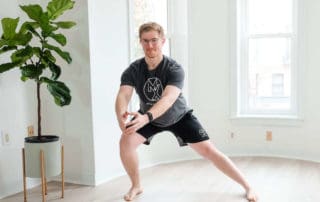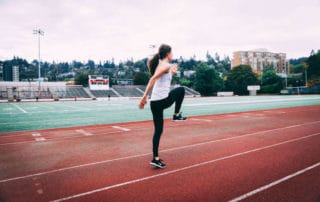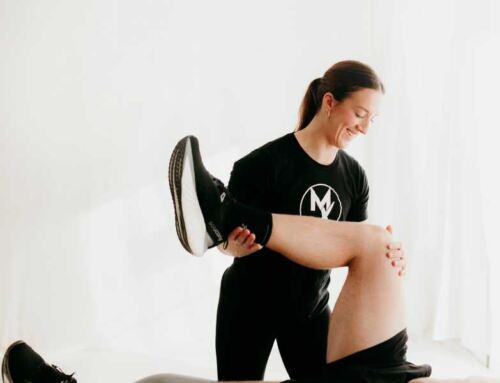New to Running? Here’s How to Get Started
As we collectively recover from the pandemic, many are still experiencing increased stress, difficulty sleeping, trouble concentrating, and changes in mood. Over the past several years, we have gained a better understanding of the impact of exercise on the brain and on mental health. We know that physical activity improves your mood, mental health, sleep, concentration, energy, and overall health.
The current recommendation is for adults to perform at least 150-300 minutes of moderate intensity exercise or 75-150 minutes of vigorous intensity exercise. Additionally, we should strength train at least 2 days a week to achieve the health benefits of physical activity.
We believe that healthy movement should be accessible to all. For example, running requires no equipment—just a route, sneakers, and some motivation. Even better, running can be performed outside, independently, and in a socially-distant matter.
If you are new to running, here’s everything you need to know to get started and stay healthy and injury-free throughout your early progress.
How do I safely get started with running?
An effective running program consists of strength training, running drills/technique work, running itself, and rest. As you get started, it is important to slowly ease into a running routine, as to let you adjust to the new stress placed on your body.
By slowly increasing the amount of running you do per week and overall mechanical load placed on the body, you can better prevent an overuse injury. Additionally, making sure to incorporate both a warm-up and cool down are vital to ensuring proper priming and recovery of the musculoskeletal and cardiovascular systems.
Most injuries related to running are related to doing too much, too soon, too fast, and too quickly. Therefore, gradual progression is key.
An easy rule to remember as you get started is the “10% rule.” This rule states that a runner should not increase mileage more than 10% each week. Though there has been dispute over the specific percent, a study suggests that injury rates were found to be lowest in individuals who increased weekly mileage by less than or equal to 10% over 2 weeks.
Let’s put the 10% rule into action to better understand how to increase mileage:
Why do you need a comprehensive run program?
A strength training program, key running drills, and a dynamic and static stretching routine are vital components of any run program.
Strength exercises should focus on the core, hips, posterior chain, and single leg stance stability. I want to emphasize the importance of single leg stance stability for running. If we take a minute to break down running, it is a series of being on each leg, repeated over and over again.
Therefore, it is key that we are able to support our body in single leg stance, with the help of our core, hip, and lower leg muscles. Best of all, body weight strength exercises can be performed anywhere without equipment!
Running drills can help activate the specific muscle groups we use for running. By taking your body through similar motor patterns to running, we can prime our body and our brain to take on the load associated with running. In addition, these drills help with running form to improve effectiveness and efficiency of running. Some examples include A-skips, B-skips, bounding, and marching.
Dynamic stretches such as lunges, knee hugs, spinal rotations, and a “world’s greatest stretch” are recommended to prepare for running. It was traditionally thought that we should stretch before running, but studies show that stretching statically before exercise does not reduce the risk of injury. As stated, a warm-up is recommended before all forms of exercise to increase blood flow to working muscles, speed up nerve impulses sent to/from the brain, and improve muscle flexibility. A warm up, in the form of dynamic stretching, helps to increase the mechanical efficiency, speed and force of muscle contraction, and range of motion to help prepare us for exercise.

This does not mean that traditional static stretching is not important. It is important that we keep specific muscle groups flexible to achieve an effective running form. For example, during hip extension, we generate the force we need to move our body forwards—to propel into the next step. If we do not have the flexibility to move into hip extension, our run form becomes more inefficient. This concept can be applied to other important muscle groups.
Conclusion
- We need to ensure optimal muscle strength and length so that we can move our best and reduce the risk of injury.
- Priming the body is important: practice motor patterns that prepare the body to run effectively.
At MovementX, our physical therapists are here to help you move better and live better. A running program can be intimidating; which is why we want to make it easy for you.
Our physical therapists are trained in movement analysis and can break down your specific movement patterns, identify your functional limitations, and prescribe a comprehensive run program that works for you.
Click below to set up an initial evaluation to get started with running.

















